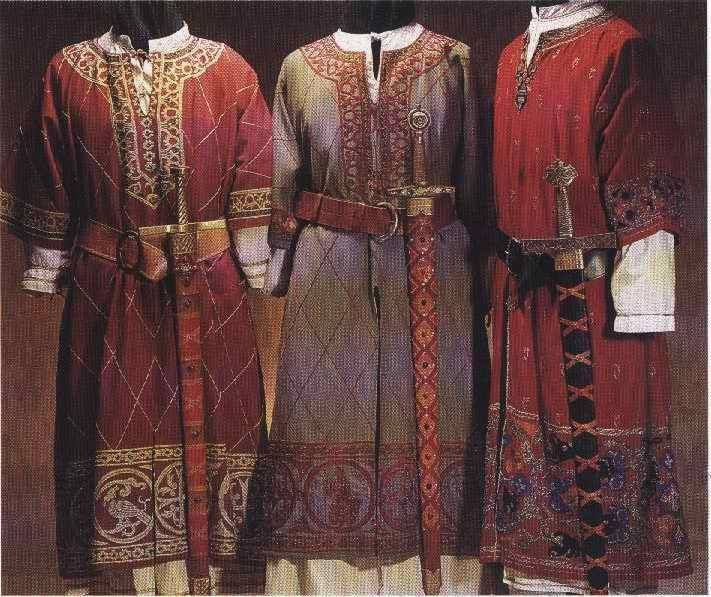Khazigur
Demographics
40% Human, 20% Pilaani Elven, 5% each Other Elven, Gnomish, Halfling, Orcish, Aasimar, 1% each Dwarven, Dragonborn, Goliath, Goblin, Kenku
Government
Absolute Autarchy (semi divine monarchy)
Defences
Khazigur has had city walls from time to time, and the seaward edges of the city still retain a mostly-intact wall for defense from storm waves, if not from invasion by sea. The western side of the city has had any number of transverse walls, but the city has overspilled it time and again, so the effectiveness of these defenses in case of an actual attack is somewhat limited and the city cannot be wholly shut up behind contiguous defenses. However the sheer size of the place, with a population well above two million, and two thousand square miles of urban infrastructure just on the surface, not to mention perhaps four times as much in the sewers below, would make any garrison effort somewhat pointless. That said, the city planners are well aware that the massive density of population in the east of the city depends on its massive agricultural fields in the west part of the city, and most of the military defenses are clustered there as a result; a low swampland, a cemetery larger than a city in its own right, and the prison campus provide the border between Western farmlands and Eastern cityscape, and the prevailing thought is that the western defenses could bog down an enemy force long enough for the east to muster to arms in that borderland.
The three sides of the city open to the sea are under constant patrol and the protection of the Heart of the Tempest carrier battle group, with 50 hippogriff pilots in addition to three heavy battleships, six heavy cruisers, and dozens of light cruisers and destroyer-class vessels maintaining a vigilant watch; two additional two-carrier groups are on duty in the Triad Sea and in the Septesian Straits, always within four days' sail of home.
Famously, an entire landing force of invaders from Toz, estimated at no fewer than twenty thousand hardened marine combatants, attacked the city in 5472 during the last great open war between the two Empires. The invaders came ashore from the eastern beachlands into Temple Shores and stormed into the House Absolute - never to be seen or heard from again. The building literally swallowed the entire army, none of which was able to make it out of the undermaze to any of the inhabited, active areas of the structure. From time to time bones and armor of one or two of the lost invasion's soldiers are found, or claimed to be found, behind walls or down in the dank underbowels of the dark and mysterious uber-fortress where the Autarch makes his or her home.
Industry & Trade
134 different trade and occupational guilds are headquartered in the city, though some of these (like the Witches' Guild and the Investigator's Guild) are not commercial. The city grows excess food three seasons of the year, but requires food imports or consumption from storage in the Winter. At one time its western timberlands were a net positive as well, but construction and shipbuilding have made that more of a push and at times, such as after the fires of the 12010's and the earthquake of the 12040's, the need for timber outpaced the regulated timber forests' ability to produce it.
But beyond natural resources and foodstuffs, Khazigur has always been a center for the export of manufactured goods of all varieties including textiles of all kinds, and its slaughterhouses produce mountains of fine leathers and other processed animal goods in addition to the mountains of meat to feed the enormous population. Metalcraft is a high art here, as well as the raising and breeding of excellent horses of all varieties, especially work and warhorses. The climate is also amenable to the production of herbs and oils, perfumes and unguents, though not as fine or as expensive as those of the drier climate of Toz or wetter and cooler lands of Pantanh in the far east.
Infrastructure
Comprising well over 2,000 square miles of urban and semi-urban area, the city is layers of new roads and buildings built on top of and next to old roads and old buildings, a dizzying maze of alleys and narrow gravel paths bisected and trisected by wide paved streets of cobblestone or concrete or in some cases, segments of fused glass reminiscent of a giant insect’s carapace. Monuments are everywhere, roadside shrines and statuary commemorating victories and kings (and more than a few uncertain gods) of millennia ago, many treasured and beloved, often re-purposed, some forlorn or completely forgotten.
Several city guilds are dedicated wholly to the maintenance of the city infrastructure, its defense from fire, the removal of its waste products and interment of its dead, and the maintenance of the equally dizzying maze of storm and waste sewers and catacombs running everywhere under the streets. City walls are likewise often remnants of older structures or sections of the city, or of older fortresses long ago absorbed into the urban sprawl. Though the population of the city is higher, it is smaller in square footage than Naugor; where that city has grown ever-outward, Khazigur has in many places grown vertically, with six and even ten-story buildings not uncommon, straining the limits of the architecture of the age. Many of the oldest and tallest buildings, such as the Pan-Celestial Cathedral and sections of the House Absolute, are framed in lightweight and strong ghostwood. This allows for soaring designs that can no longer be safely achieved with other woods or metals, though steel framing - hideously expensive but within the reach of the most wealthy merchants - has been used in several more recent structures. Squat buildings based on massive granite foundations also allow for heights up to about twelve stories. These large structures tend to be residential blocks, with shops on the ground floor and gardens with functional crops planted over the flat roofs.
Assets
Khazigur is the capitol of the Khazigiri Empire, and of the Prime Province of Khazig (Khazigur simply means 'City of Khazig'). As such it houses literally thousands of buildings connected with the governing of the Empire, its many civic structures, the courts of law, the military and navy, and the nobility surrounding the Absolute Ruler, as well as many parallel sites utilized in the governance of the city and of the province apart from the whole of the Empire. It is also the prime seat of Religious power, with the five supreme Heirodules and the apparatus of the entire Basilidean Church based out of the Pan-Celestial Cathedral inside the city. Hundreds of individual banks as well as the Imperial Treasury are found here, along with thousands of taverns, inns, merchants, and markets; six distinct city markets are in operation at all times and dozens more spring up on various schedules on various streets and squares and fairgrounds inside the city.
Geography
The Khazigur Peninsula is a roughly W - E protrusion of ancient volcanic flow over what was at the time an undersea cliff; subsequent uplift, erosion and the receding sea level configured the terrain seen today, a snout of land surrounded by sea on 3 sides. The River Yzen winds along the southern third of the snout, and deposited rich farming silt in the soft shallows, giving Khazig its consistently productive western farmlands, but turning the lowest parts of the south side of the peninsula into a thick swamp. The Dragon Dam was meant to dry out the region, but it has only partly succeeded; the lake formed behind the dam provides much of the fresh water for the city, while the flow of the Yzen through the city removes the waste products out to sea. A number of smaller reservoirs also exist in the city, which has both above-ground water bridges or aquaducts, and below-ground piping, to service virtually all of the city. Even the most squalid parts of the Quags at least have ready access to fresh water at the community hand-pumps, though not every house has internal plumbing.
Maps
-
Khazigur Central City Map
Map showing the six(ish) main districts of the Imperial Capital and the northern, central and southern agricultural lands to the west of the city. Shows relative position of the Cloister, Gulcrest, Palarine, Barrenyke, The Revelry District, the Quags and Temple Shores. Major structures such as the House Absolute, the Pan-Celestial Cathedral, the Stockade prison/workhouse, bridges, docks, and intact walls and towers are also indicated. -
Coastal Caves I
Map of the Coastal Cave "Yeekadeedah', "Kobold's Buried Treasure". Ages ago, a dragon named Thornugordonon made the largest chamber his lair, with minions throughout the rest of the cave, but an earthquake collapsed the only entrance large enough for him to use for egress, and after a valiant attempt by his minions to keep him fed with virgins - or anything close to virgins - eventually he sickened and was relatively easy prey for a band of adventurers circa 400 years ago. His minions remained in the caves, coaxing a monstrous squid-creature to full adulthood after an epic quest all the way to Mlastina to procure one of Abaia's desecrated children; but the monster is of only high animal intelligence and not much use in protecting the minion descendants who live on land; it would eat any of them who strayed too close anyway. Recently, a band of Ophitic sorcerors running from the law 'discovered' the cave and it's nearly complete skeleton of Thornugordonon, an incredibly rich source of nitre or saltpeter, the rarest of the three main ingredients of gunpowder. The enterprising cultists immediately established a black market mine, forcing minions and slaves to collect the bone, crush it to a powder, and use various simple chemical reactions to separate, purify and refine the nitre before selling it to criminal interests such as the Past Lives and, until recently, the Steel Reciters. -
Coastal Caves - Flooded
Deluge
After clearing the debris blocking the old cave entrance, the party discovered that the cave mouth had been 30' underwater all along. All parts of the cave at or below the level of the cleared space were rapidly flooded, and though the water is draining slowly through the lower pool drain where Ten Hooks used to be, it will take months just to lower it to that level, and this will still leave much of the cavern complex flooded until the Humanoids do something to further drain it. The Ophitic cult that had been using the northern chamber for their temple has presumably drowned, though the structures remain mostly intact under the water. Their area was a further 20' or so in lower elevation, so the water in that section is well over the top of the low buildings.
Alternative Name(s)
City of Witches and Stars
Type
Capital
Population
2,227,890
Inhabitant Demonym
Khazigurites
Included Locations
Owning Organization










Comments